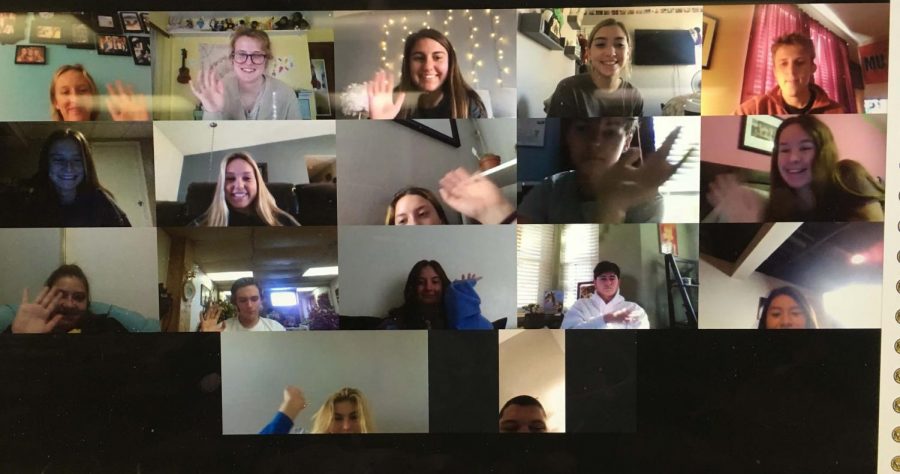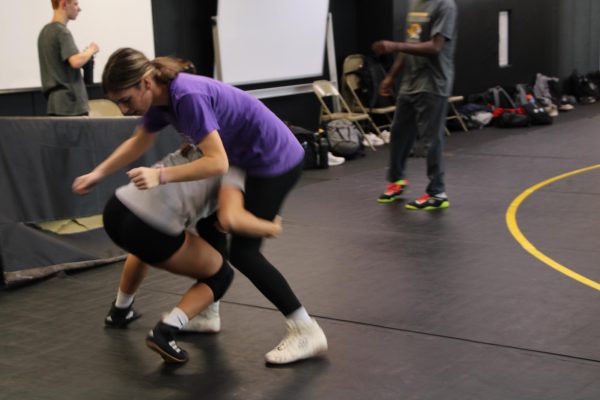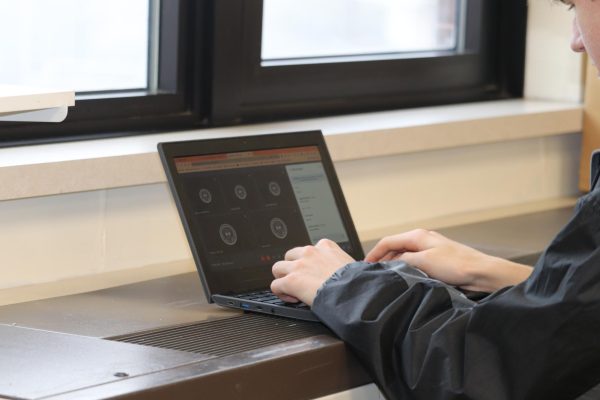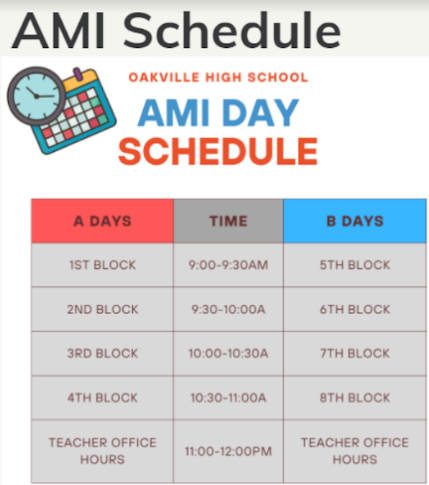Keeping cameras on during class can benefit students during virtual learning
Mr. Jeff Kuchno’s third block broadcast class participates in his “On-Camera Challenge.”
During this time of virtual learning, it’s common for students to want to sit behind their screens at home with mics muted and cameras off. The tiger heads that show when a student shuts off the camera often populate a Google Meet more than the students’ actual faces. I believe that this can cause students to disengage from the class. It can also make it easy for students to miss out on coursework. Having the camera on in class can aid students in having a better learning experience.
Keeping the camera on can help students work better together as a community. Ms. Kelsey Tunze, a biology teacher at OHS, says that she finds her students are more likely to turn their camera on during breakout rooms. This is helpful to her but also to other group members by allowing better, more thorough conversations to occur. More thorough conversations also allow for more thorough learning.
Having the camera on also helps keep students engaged and ready for class. With the camera off it is easy to become distracted by your surroundings. Mrs. Jessica Betz, an English teacher at OHS, says that if students kept their cameras on it would most likely make them more accountable for being engaged with what is going on in class. Students would probably wake up sooner to look presentable if their cameras had to be on.
“I also tell them it’s fine if the ceiling fan is the only thing I can see, it just shows me they are there and engaged,” Betz says.
The teachers are also a reason to keep cameras on. Although as simple as just one click, turning off the camera has a lot of impacts. Teachers have found it more difficult to teach while staring at a blank screen. With cameras off, it is hard for teachers to tell if students are truly grasping the concept.
“With cameras off, it’s easy to feel worried that I’m not helping enough because I can’t see what the student understands,” said Mrs. Liliane Hanna, a Spanish teacher at OHS.
Hanna went on further to explain that students shutting off themselves to the class saddens her because we should be trying to create a community where we can communicate, learn, and grow together.
When students display their faces in class it can also provide for a more fun learning community. Mr. Jeff Kuchno, the journalism teacher at Oakville, has started an “On-Camera Challenge” with all his students. If they can keep their cameras on every class until the end of the year, he will allow them to drop their lowest grade.
So far, the challenge has proved to create a better learning experience, and the class has been full of student’s faces, crazy backgrounds, and fun.
On the other hand, most students naturally want to turn their cameras off. Students may not be comfortable with everyone looking at them, or they may not have a good environment to have their cameras on.
Holly Shotton (12) says “It’s easier to have it off. I feel like most students don’t feel comfortable with showing everyone themselves, their room, or house.”
However, virtual learning is still considered class, and if students were in class they would be expected to be present in their seats. Turning the camera on is the same as being present in class. Students should realize that, normally, classmates would be able to see them.
I think that it is essential for students to have their camera on if they want to have a good learning experience. Having the camera on causes students to engage in class and become a more tight-knit community.

Hi! I’m Morgan Herrick and I’m a senior this year. This is my first year as a part of the journalism program at OHS. I’ve played volleyball at Oakville...







